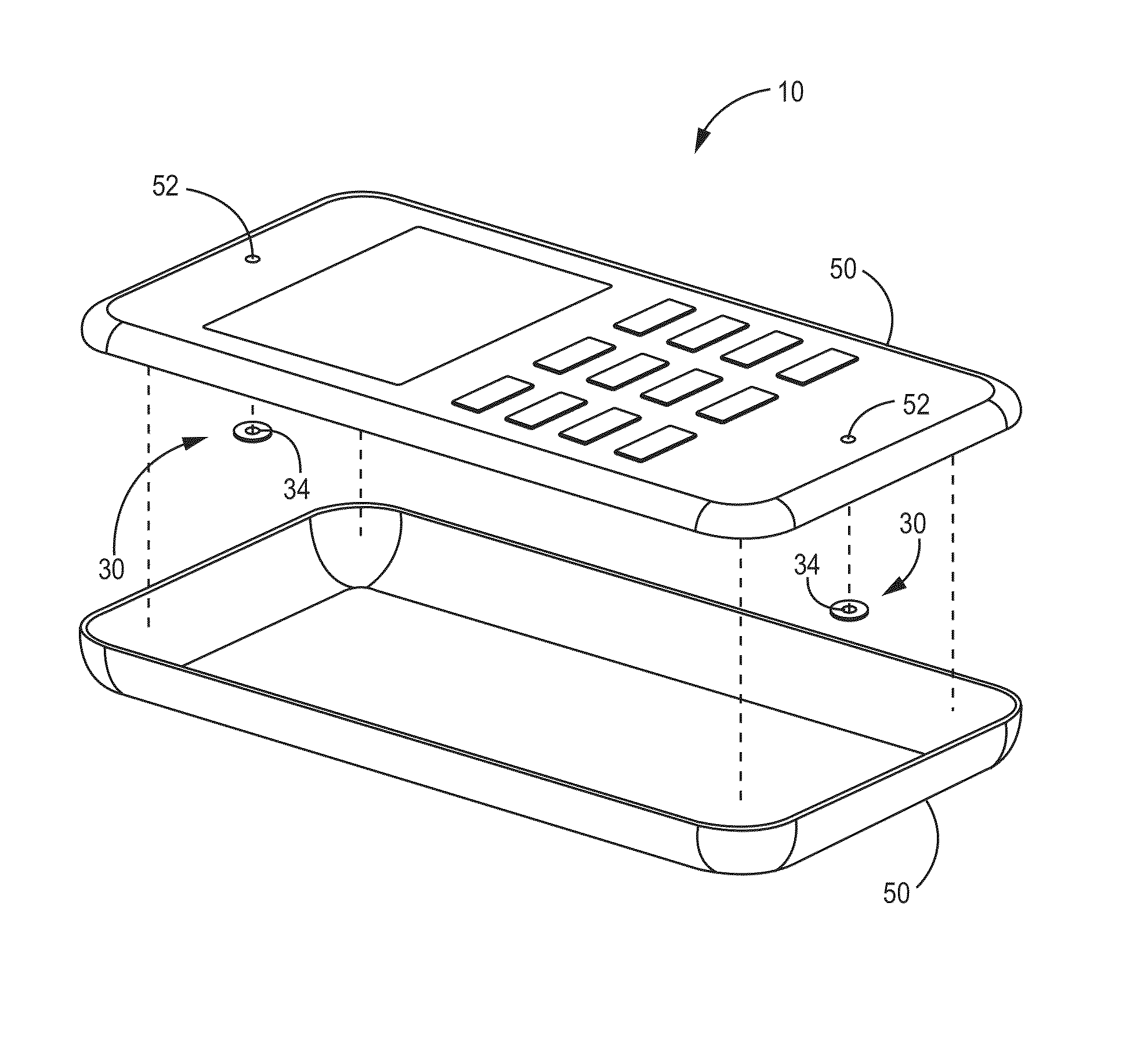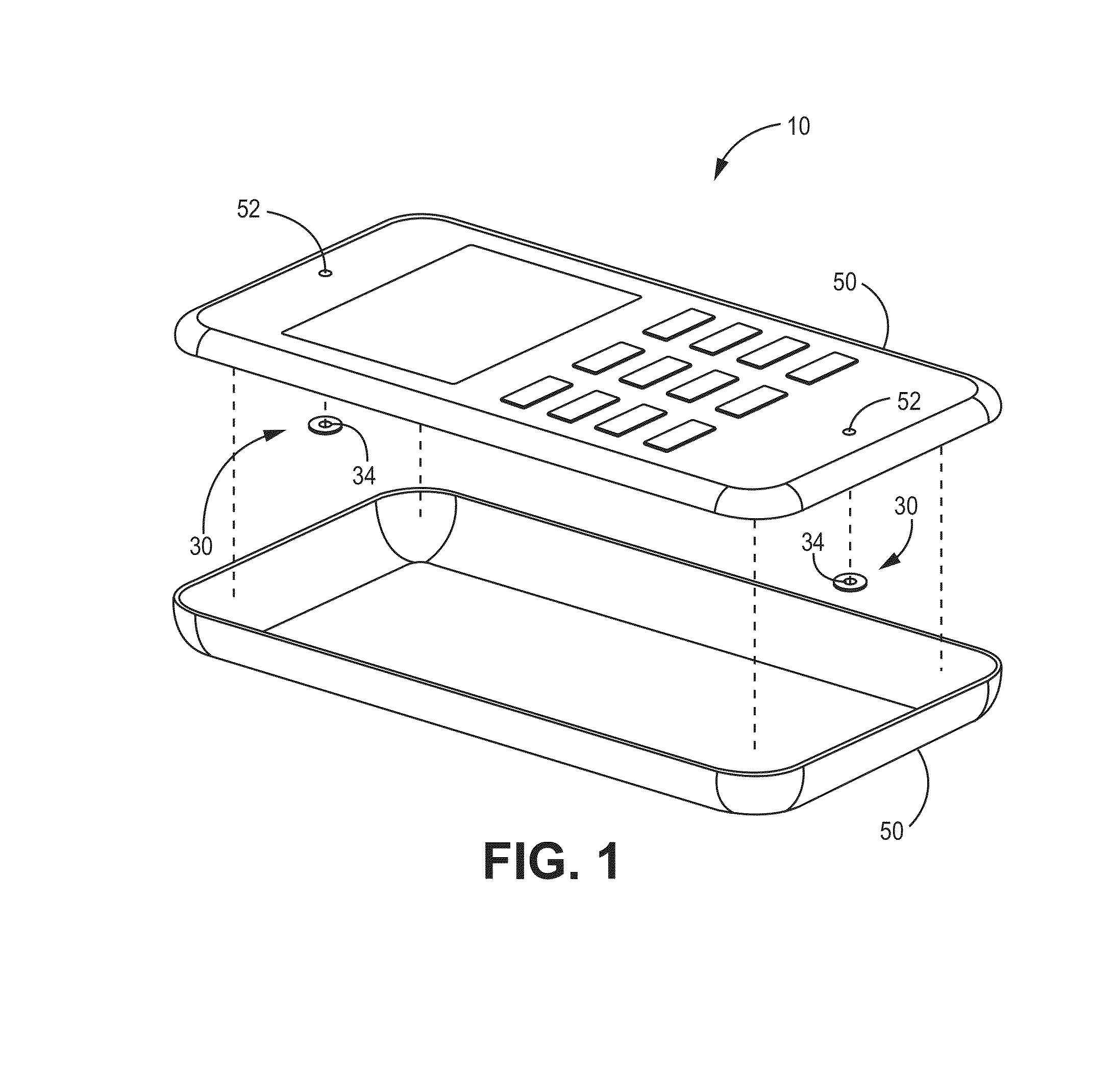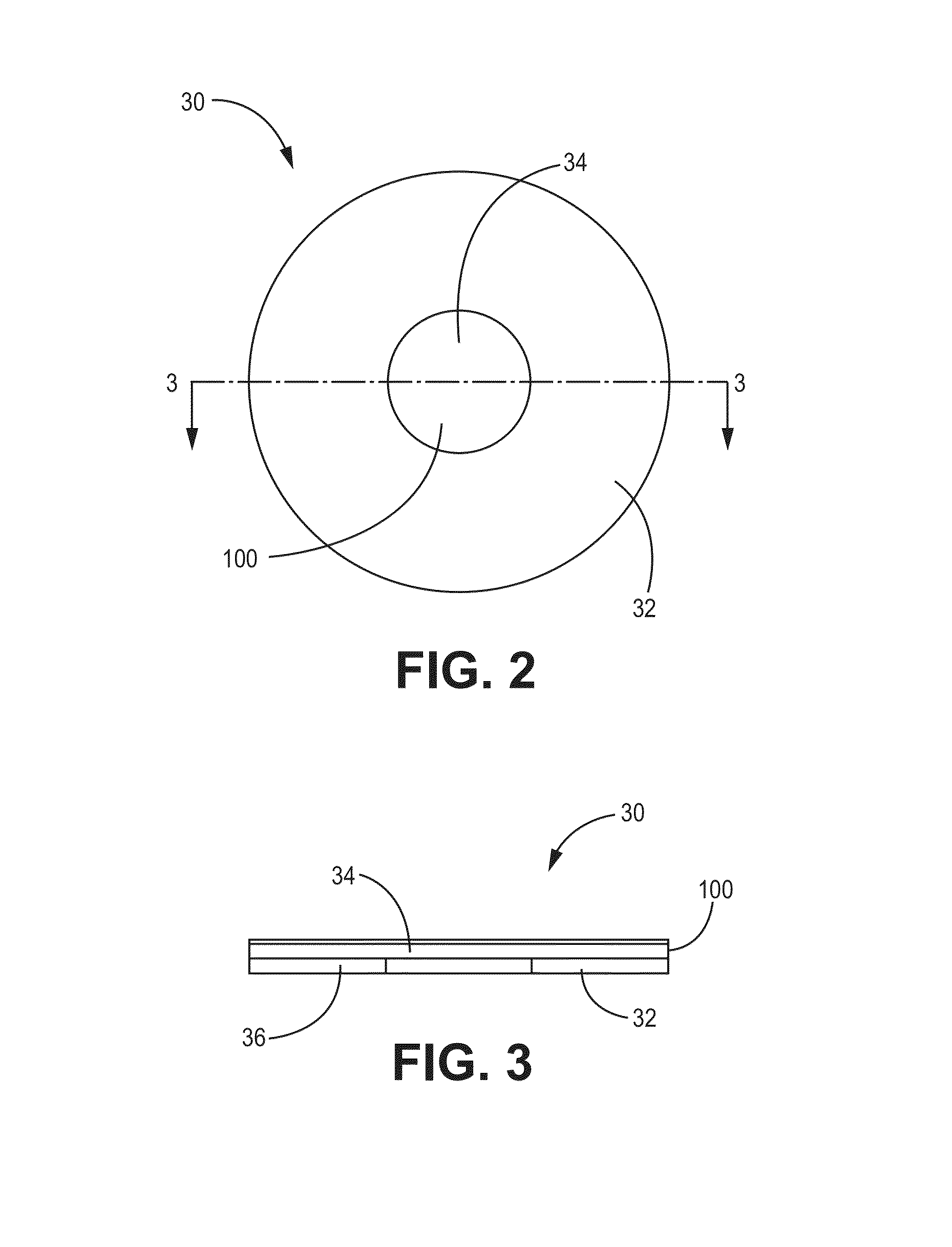Microporous membrane and fine-fiber laminate
a microporous membrane and fine fiber technology, applied in the field of laminates, can solve the problems of affecting the acoustic performance of laminate designs, affecting the performance of laminates, and affecting the insertion loss of laminates, and achieving the effects of reducing the number of insertions
- Summary
- Abstract
- Description
- Claims
- Application Information
AI Technical Summary
Benefits of technology
Problems solved by technology
Method used
Image
Examples
Embodiment Construction
[0036]The technology encompassed by the current disclosure generally demonstrates that laminates can be used in the context of acoustic venting applications, potentially with a relatively negligible effect on acoustic performance, by tailoring material properties and the basis weight of a fine fiber matrix configured to be laminated to a microporous membrane. FIG. 16 depicts insertion loss results of laminate samples 2300-35-1 and 2300-35-2 with fine fiber spun directly to ePTFE membrane, and the insertion loss of the ePTFE membrane alone. As depicted, there is a relatively small effect on insertion loss compared to the sample response depicted in FIG. 15.
[0037]FIG. 1 depicts a schematic of an example implementation of the current technology. An electronic assembly 10 has an enclosure 50 defining at least one opening 52 with an acoustic venting assembly 30 sealably disposed across each opening 52. The acoustic venting assembly 30 is generally configured to prevent entry of particula...
PUM
 Login to View More
Login to View More Abstract
Description
Claims
Application Information
 Login to View More
Login to View More - R&D
- Intellectual Property
- Life Sciences
- Materials
- Tech Scout
- Unparalleled Data Quality
- Higher Quality Content
- 60% Fewer Hallucinations
Browse by: Latest US Patents, China's latest patents, Technical Efficacy Thesaurus, Application Domain, Technology Topic, Popular Technical Reports.
© 2025 PatSnap. All rights reserved.Legal|Privacy policy|Modern Slavery Act Transparency Statement|Sitemap|About US| Contact US: help@patsnap.com



